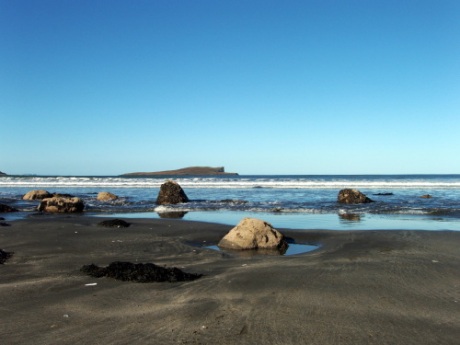I promised to say something of God’s revelation of himself in nature.’ This was the third pillar of why I believed that there’s a God and an afterlife, the other two pillars being personal experiences and God’s revelation of himself in the Scriptures. Of course the splitting of experience into personal, supernatural’ revelation and nature’ is artificial. Anyone who understands Dooyeweerd’s philosophy will understand the holistic nature of all experience. It is at odds with any naturalist understanding of reality. I think that’s probably why Dooyeweerd uses reality’ and temporal reality’ rather than world’ or Nature.’
The idea of Nature’ problematic
So even the very idea of Nature’ is problematic. I noticed in Troost’s introduction to Dooyweerd’s thought that nature’ isn’t even mentioned once in the Index. Nature is a human construct and it has over the last few centuries been given pre-eminence in western life and experience. Gradually, since the Renaissance it was assumed to have an autonomous and foundational role. So much so that, for some, the naturalist / materialist hypothesis came to replace God as the foundational reality. An alternative idea, of course, is that all reality, including nature, have their source in a Creator God.
The naturalist hypothesis
But let’s for the moment, for the sake of argument, accept the hypothesis of an independent, autonomous realm called Nature from which life arises. This was the way some people looked at the world of nature, say in the 18th and 19th centuries. So we had natural theology and people like William Paley arguing that anatomical features such as the eye were evidence of divine design. Later, and down to our day, there were detractors saying that evolution could explain the nature of organisms. The design argument was supposed to have been dealt a fatal blow. However, it can be argued now, at the beginning of the 21st century, that the design argument is back with a vengeance, but in a much more sophisticated form. How can that be possible?
An intelligence beyond the human
In a nutshell, it’s possible because of the discoveries of science in the 20th and 21st centuries. Various discoveries such as the quantum revolution, so-called big bang’ cosmology and more detailed information as to how biological systems work have made people realise the incredible fine-tuning involved and that there has to be an Intelligence far beyond the human as the source of what we see around us.
The matrix of all matter
Max Planck (1858-1947), who received the Nobel Prize for Physics as the originator of the quantum theory said this:
‘As a man who has devoted his whole life to the most clear headed science, to the study of matter, I can tell you as a result of my research about atoms this much: There is no matter as such. All matter originates and exists only by virtue of a force which brings the particle of an atom to vibration and holds this most minute solar system of the atom together. We must assume behind this force the existence of a conscious and intelligent Mind. This Mind is the matrix of all matter.’
Many major scientists have been led by their study of nature to the same conclusion, namely, that there is a conscious and intelligent mind underpinning reality.
What other scientists said
In his book There is a God Antony Flew quotes several eminent scientists, among them Einstein and Dirac.
Einstein: Everyone who is seriously engaged in the pursuit of science becomes convinced that the laws of nature manifest the existence of a spirit vastly superior to that of men, and one in the face of which we with our modest powers must feel humble.’
Paul A.M. Dirac, who worked on quantum theory with Heisenberg and Schrödinger: God is a mathematician of a very high order and He used advanced mathematics in constructing the universe.’
Hoyle and the superintellect
Because scientists believe in a supreme intelligence as a source of the universe, doesn’t mean they believe in a personal God. Far from it. At least some scientists, because of their naturalist assumptions, tend to find it difficult to get beyond a deist God. Astrophysicist Fred Hoyle was an atheist but yet he could say:
“Some super-calculating intellect must have designed the properties of the carbon atom, otherwise the chance of my finding such an atom through the blind forces of nature would be utterly minuscule. A common sense interpretation of the facts suggests that a superintellect has monkeyed with physics, as well as with chemistry and biology, and that there are no blind forces worth speaking about in nature. The numbers one calculates from the facts seem to me so overwhelming as to put this conclusion almost beyond question.”
He believed in a ‘super-calculating intellect’ yet he had no faith in the God of the Bible, as is clear from his book The Intelligent Universe.
How it all fits together
Personally, I find nature’, even if viewed from a naturalist viewpoint, overwhelming as evidence of a sublime intelligence. It isn’t just how everything fits together at the atomic level but how beauty in its various manifestations emerges from that order. But to complete the picture I need the other two pillars, the personal experiences and the revelation of God in Christ. Without these the revelation of God in nature would be incomplete. But the three together make the presence and reality of God certain.




